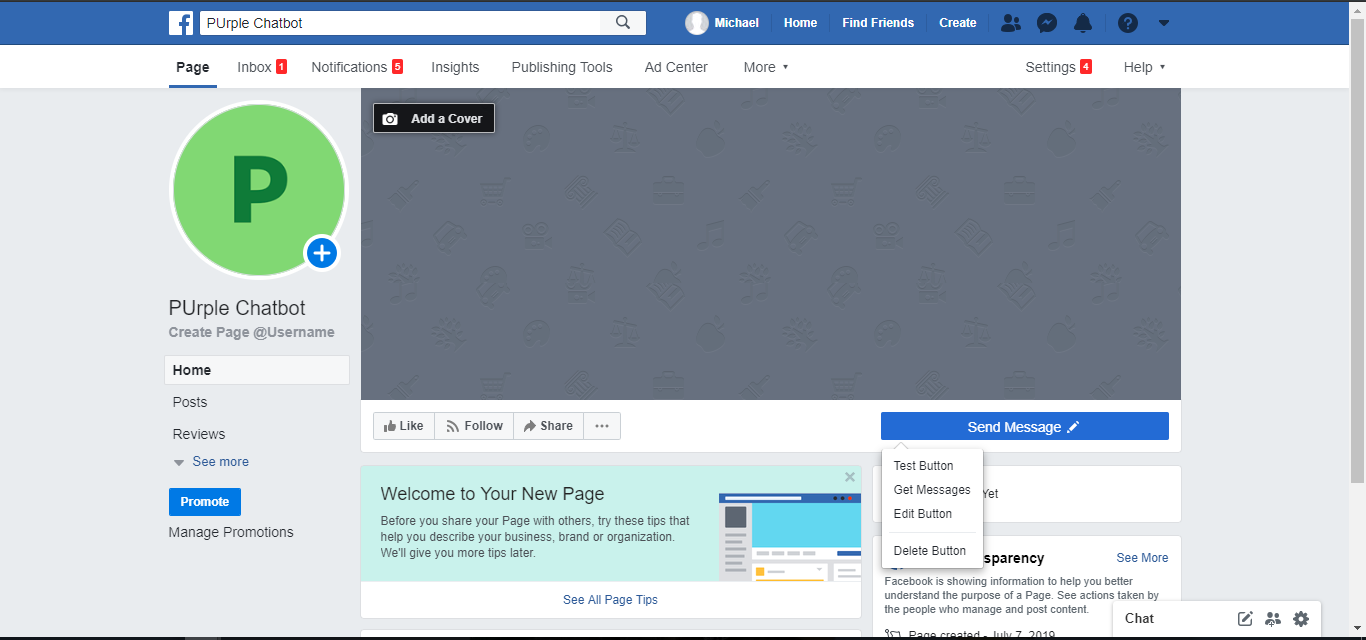Create your first automation in just a few minutes.Try Studio Web →
Facebook Chatbot Framework
by Sydney Renei Cruz
0
Template
531
Summary
Summary
RPA Facebook Chatbot Framework is one of the ways to revolutionise chatbots. This is an initiative to interconnect the RPA solutions and Chatbot functionalities to have a smooth flow of direction
Overview
Overview
While this is on the early stages of development and is open to many ideas, this framework already covers a lot of major areas. Such as Session Handling, Response Handling, Usage of RE-Framework and Orchestrator.
RPA Facebook Chatbot Framework is just one of the solutions to revolutionise Chatbots. While this is on the early stages of development and is open to many ideas, this framework already covers a lot of major areas. Such as Session Handling, Response Handling, Usage of RE-Framework and Orchestrator.
Session Handling
The idea behind the interaction between the user and the chatbot is purely based on sessions (or states). The chatbot, before processing the inputs of the user, determines which session he is on. However, sessions can be bypassed once it determines the type of action he is doing; since part of the framework are to handle quick access requests and input validations. How does the chatbot handle sessions? By simply connecting the robot to a database; but in our case, we will use Excel as an alternative.
Response Handling
The chatbot is also based on templates. These templates are used to determine which response to send to the user. The template currently supports these types of responses: text, attachment, quick reply, and button template. The template also handles the accept types that will be used to validate the input of the user.
Usage of RE-Framework and Orchestrator
The chatbot is built with RE-Framework. Modifications on the RE-Framework were made to suit the flow of the chatbot. It also uses the Orchestrator as a connector for the chatbot to send a request to the robot by using its Queue Service. The robot, however, does not need to use the Orchestrator to connect to the chatbot as it can directly send a Facebook API request.
This also assumes that the developer must be knowledgeable of the technologies and applications used to integrate with the Robot. He/She must also have the high understanding of how chatbots work and understand very well the scope and limitations of Facebook API.The idea behind the interaction between the user and the chatbot is purely based on sessions (or states). The chatbot, before processing the inputs of the user, determines which session he is on. However, sessions can be bypassed once it determines the type of action he is doing; since part of the framework are to handle quick access requests and input validations. How does the chatbot handle sessions? By simply connecting the robot to a database; but in our case, we will use Excel as an alternative.
Response Handling
The chatbot is also based on templates. These templates are used to determine which response to send to the user. The template currently supports these types of responses: text, attachment, quick reply, and button template. The template also handles the accept types that will be used to validate the input of the user.
Usage of RE-Framework and Orchestrator
The chatbot is built with RE-Framework. Modifications on the RE-Framework were made to suit the flow of the chatbot. It also uses the Orchestrator as a connector for the chatbot to send a request to the robot by using its Queue Service. The robot, however, does not need to use the Orchestrator to connect to the chatbot as it can directly send a Facebook API request.
This also assumes that the developer must be knowledgeable of the technologies and applications used to integrate with the Robot. He/She must also have the high understanding of how chatbots work and understand very well the scope and limitations of Facebook API.
Features
Features
RPA Facebook Chatbot Framework offers an easy development and content management. The following are also benefits of this component: Template Based - Developers and Content Managers can easily change the responses being sent to the user. Session Management - This component is built with the idea of chatbots. The framework offers an easy control on the flow of sessions. UiPath Orchestrator - This component uses UiPath Orchestrator as its host for getting transaction data when a user sends a message. Re-Framework - The base of this component is built with an almost-similar structure coding standards of the Re-Framework. Developers with experiences using the Re-Framework may find this easy to understand.
Additional Information
Additional Information
Dependencies
The following are the dependencies of the component. UiPath Orchestrator UiPath Studio and Robot Facebook Chatbot already set Custom API already set, can send Queue Items, and trigger a job process from the Orchestrator
Code Language
Visual Basic
License & Privacy
MIT
Privacy Terms
Technical
Version
1.0.1Updated
August 11, 2021
Works with
Studio: 21.4 - 22.10
Certification
Silver Certified
Support
UiPath Community Support
Resources
